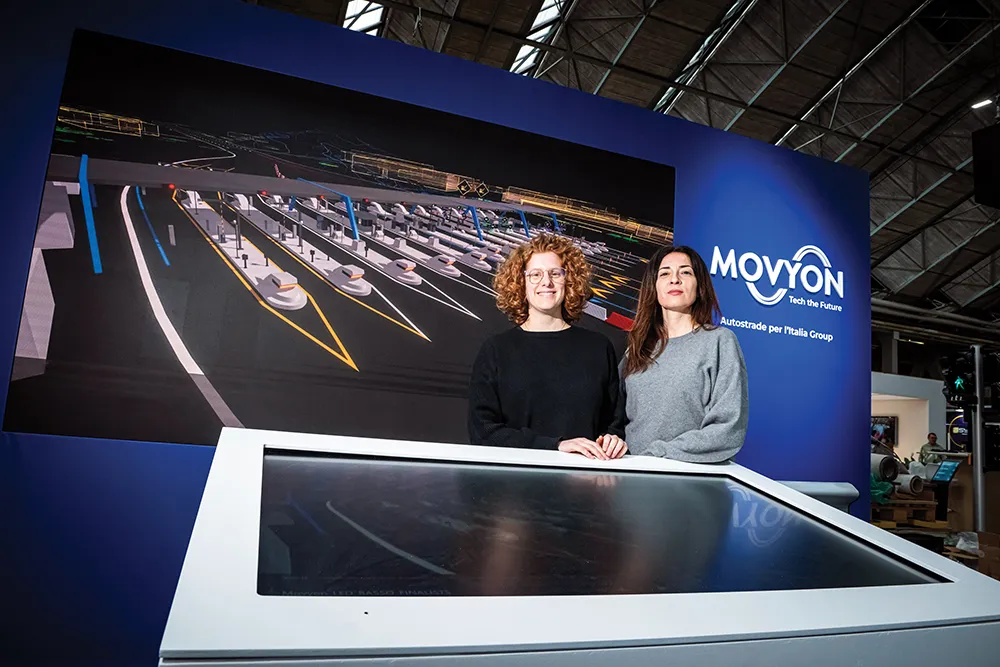Visitors to the IRD stand at the 2015 ITS World Congress will have an opportunity of seeing the VectorSense (VI2M) sensor suite that presents opportunities for new ITS applications and that will be commercially available next spring.
IRD says the VectorSense sensor suite provides new, not previously available, vehicle and traffic data, including lane position information, single/dual and super single tyre measurement and identification of low-pressure tyres, all at highway speed, for use in commercial vehi
July 31, 2015
Read time: 2 mins
Visitors to the 857 IRD stand at the 2015 ITS World Congress will have an opportunity of seeing the VectorSense (VI2M) sensor suite that presents opportunities for new ITS applications and that will be commercially available next spring.
IRD says the VectorSense sensor suite provides new, not previously available, vehicle and traffic data, including lane position information, single/dual and super single tyre measurement and identification of low-pressure tyres, all at highway speed, for use in commercial vehicle operations (CVO), toll road operations, and vehicle safety and traffic data collection applications.
The tyre position and footprint data provided by the VectorSense sensor suite opens up new possibilities for traffic data collection, commercial vehicle safety, and toll road operations. Demonstrations of this new product with interested organisations are underway, with commercial availability in the spring 2016.
Rish Malhotra, IRD VP of International Business, says there is an increasing demand for automated, continuous, real-time provision of vehicle and traffic data. The company’s weigh-in-motion (WIM) systems with integrated machine vision have positioned the company well to meet this demand.
IRD will also be presenting an array of advanced traffic management and ITS solutions for infrastructure management, including toll systems (WIM@ Toll), commercial vehicle enforcement, infrastructure asset management, traffic intelligence, enterprise solutions and access control systems. IRD supplies ITS systems incorporating WIM sensors such as IRD-PAT Bending Plate, Single Load Cell (SLC) scales, and quartz and piezo sensors. In addition, IRD’s VectorSense (VI2M) sensor suite presents opportunities for new ITS applications.
IRD says the VectorSense sensor suite provides new, not previously available, vehicle and traffic data, including lane position information, single/dual and super single tyre measurement and identification of low-pressure tyres, all at highway speed, for use in commercial vehicle operations (CVO), toll road operations, and vehicle safety and traffic data collection applications.
The tyre position and footprint data provided by the VectorSense sensor suite opens up new possibilities for traffic data collection, commercial vehicle safety, and toll road operations. Demonstrations of this new product with interested organisations are underway, with commercial availability in the spring 2016.
Rish Malhotra, IRD VP of International Business, says there is an increasing demand for automated, continuous, real-time provision of vehicle and traffic data. The company’s weigh-in-motion (WIM) systems with integrated machine vision have positioned the company well to meet this demand.
IRD will also be presenting an array of advanced traffic management and ITS solutions for infrastructure management, including toll systems (WIM@ Toll), commercial vehicle enforcement, infrastructure asset management, traffic intelligence, enterprise solutions and access control systems. IRD supplies ITS systems incorporating WIM sensors such as IRD-PAT Bending Plate, Single Load Cell (SLC) scales, and quartz and piezo sensors. In addition, IRD’s VectorSense (VI2M) sensor suite presents opportunities for new ITS applications.










